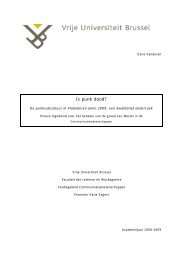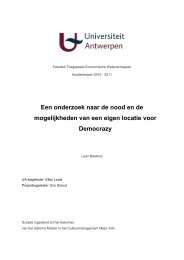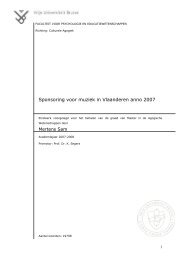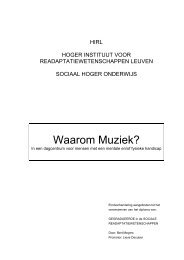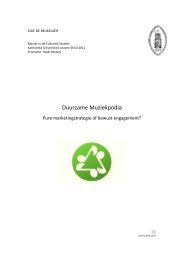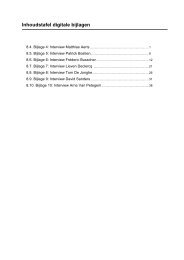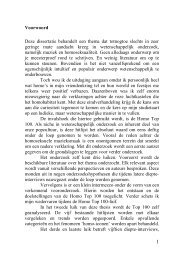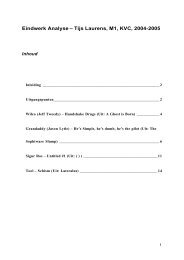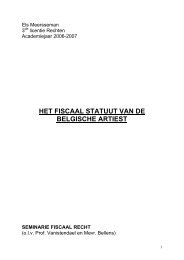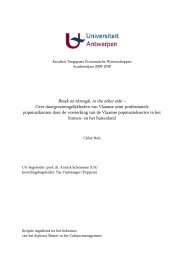Hip hop identity in a township reality. - Poppunt
Hip hop identity in a township reality. - Poppunt
Hip hop identity in a township reality. - Poppunt
You also want an ePaper? Increase the reach of your titles
YUMPU automatically turns print PDFs into web optimized ePapers that Google loves.
1998a: 272) states that three dimensions need to be taken <strong>in</strong>to account <strong>in</strong> the<br />
<strong>in</strong>terpretation of code-alternation:<br />
“The first dimension is that of the speaker’s and the recipient’s <strong>in</strong>dividual<br />
competences and preferences. The second dimension is that of<br />
conversational structure. The third is that of the values and social mean<strong>in</strong>gs<br />
attached to the languages of the repertoire. In any particular <strong>in</strong>stance of<br />
code-alternation, all three dimensions may play a role, or just one or two of<br />
them.”<br />
The first two dimensions refer to the dist<strong>in</strong>ction between respectively participantrelated<br />
and discourse-related code-alternation/switch<strong>in</strong>g. Those are terms we<br />
already used <strong>in</strong> the previous piece. In <strong>in</strong>group code-switch<strong>in</strong>g, there can be purely<br />
participant-related or discourse-related switch<strong>in</strong>g <strong>in</strong>volved, without social<br />
connotations play<strong>in</strong>g a role. Cross<strong>in</strong>g on the other hand has all of Auer’s<br />
dimensions because the third dimension, the social mean<strong>in</strong>g, is also <strong>in</strong>volved. So,<br />
we can conclude that the <strong>in</strong>teractional character of outgroup cross<strong>in</strong>g seems to be<br />
wider than that of <strong>in</strong>group code-switch<strong>in</strong>g.<br />
Rampton, cited <strong>in</strong> Auer (1998: 288) provides us with a summary of circumstances<br />
when cross<strong>in</strong>g occurs:<br />
- recreational <strong>in</strong>teractions<br />
- adolescents<br />
- who knows each other good/well<br />
- whose <strong>in</strong>stitutional positions are more or less the same<br />
- who recognise and exaggerate the differences of their communicative repertoires<br />
- <strong>in</strong> a set of stylised and often playful <strong>in</strong>teractions<br />
- that up to a certa<strong>in</strong> po<strong>in</strong>t constitute a form of antiracism<br />
He came up with this list after his own research <strong>in</strong> Great Brita<strong>in</strong>. The question is<br />
now to what extent our data will match these features. If we compare the overall<br />
situation where Rampton did his field work, it is justified to say that the conditions<br />
<strong>in</strong> Cape Town were similar to the ones <strong>in</strong> that part of England. It is thus wellconsidered<br />
to possibly extend some of Ramptons f<strong>in</strong>d<strong>in</strong>gs to ours.<br />
3. Specification of the used codes<br />
In this section we will present the two codes between which our native Xhosaspeak<strong>in</strong>g<br />
<strong>in</strong>terviewees switch. We chose to focus on this group of our <strong>in</strong>terviewees,



